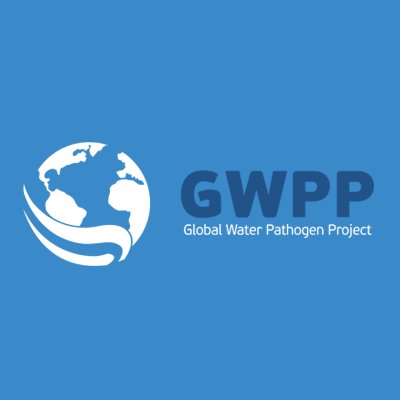Global Water Pathogen Project
 |
site internet portail Jan 2014
Ed. Michigan State University - East Lansing PHI - Paris WHO - Genève
Site internet: www.waterpathogens.org/
Abstract:
Mission of the Global Water Pathogen Project (GWPP)
The Global Water Pathogen Project (GWPP) aims at developing a knowledge resource to reduce mortality linked to water pathogens and the lack of safe drinking water and basic sanitation through creating the state-of-the-art knowledge hub on water-related disease risks and intervention measures, including new and emerging pathogens and updated scientific data replacing the current benchmark reference work of Feachem et al. The knowledge gathered through the project will be available through a UNESCO book in English, French, and Spanish, both in printed and electronic format following the open access policy of UNESCO, as well as an online data base and knowledge platform, for broad international access and ongoing updates via a global higher education network.
GWPP will focus on pathogens and pathogen risks from excreta. It will provide an updated review of the efficacy of sanitation technologies and serve as a compendium of waterborne pathogen information and quantitative data to support risk assessment to protect water safety. It will also create international multi-stakeholder collaboration and develop an information sharing network between all regions of the world. The GWPP network currently counts with currently 260 (48.08% of women) from 54 countries organized in 13 teams working on: sanitation and health (theory and control), bacterial pathogens, helminths, virus, protists, indicators and microbial source tracking markers, persistence, sanitation and disinfection, and case studies. The GWPP network also includes reviewers and a user community who will help develop decision and implementation approaches. Database management is conducted by the information technology company Agroknow. The GWP network of scientists and students is gathering and building the knowledge on pathogens in water including information on new pathogens, new methods, new data bases and new models that are available for the examination of pathogen occurrence in excreta, wastewater, other waters as well as their persistence and resistance to and removal by wastewater treatment.
Further to knowledge production and sharing, the knowledge hub will include networking and cooperation opportunities, including a registry of experts per thematic area.
The project will contribute to the implementation of SDG 6 on water and sanitation by:
providing maps showing pathogen emissions to surface water from untreated and treated wastewater to support decision making (target 6.1);
providing information on small and large systems for excreta and wastewater treatment (target 6.2);
evaluating available wastewater treatment and sanitation technologies to achieve the needed removal of pathogens to protect other water resources and public health (target 6.3);
providing information on water quality diagnostics (source tracking markers), which can be used to formulate Water Quality Agreements (target 6.5);
Future efforts will provide lectures, courses and programmes for capacity building (training and awareness raising) and water science and technology education (targets 6a and 6b).
The project will also contribute to the implementation of SDG 2 (Zero Hunger) and SDG 3 (Good Health and Well-Being) by providing information on how to prevent exposure to pathogens that cause diarrhea, the second leading cause of death for children under five and access to clean water and sanitation that prevents “environmental enteropathy”, which can lead to malnutrition.
The project is implemented by the International Hydrological Programme of UNESCO (IHP) in partnership with the Michigan State University. Work is also being conducted with the World Health Organization to support its Sanitation Guidelines and create synergies between the two projects.
The editors and contributors for the project began collaborating in the fall of 2014, with the project slated to complete in 2017. Contents:
- PART ONE. THE HEALTH HAZARDS OF EXCRETA: THEORY AND CONTROL
- PART TWO. INDICATORS AND MICROBIAL SOURCE TRACKING MARKERS
- PART THREE. SPECIFIC EXCRETED PATHOGENS: ENVIRONMENTAL AND EPIDEMIOLOGY ASPECTS
- PART FOUR. MANAGEMENT OF RISK FROM EXCRETA AND WASTEWATER
- PART FIVE. CASE STUDIES
Mots clefs: |
assainissement (CI) (DT) (OP) (ope) , boues (gestion des ) (CI) (DT) (OP) (ope) , boues (traitement des ) (CI) (DT) (OP) (ope) , maladie (CI) (DT) (OP) (ope) , santé (CI) (DT) (OP) (ope) |
Editeurs/Diffuseurs: |
|
Michigan State University - East Lansing - Etats Unis |
WHO
-
World Health Organization - Genève - Suisse |
En cas de lien brisé, nous le mentionner à communication@pseau.org